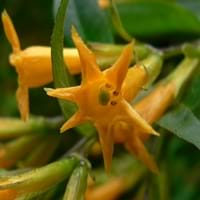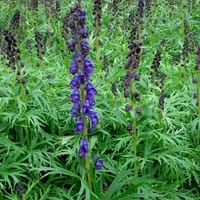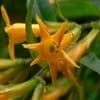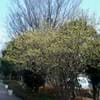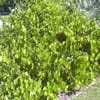Life Span
Perennial
Perennial
Type
Shrub
Flowering Plants, Perennial
Origin
Central America, South America
Not Available
Types
not available
Yellow Monkshood, Carmichael's Monkshood, Kamchatka Aconite
Habitat
Temperate Regions
low mountains
USDA Hardiness Zone
8-15
4-8
AHS Heat Zone
12-10
Not Available
Sunset Zone
H1, H2, 16, 17, 21, 22, 23, 24
Not Available
Habit
Arching/Fountain-shaped
Upright/Erect
Flower Color
Gold
Blue, Violet
Flower Color Modifier
Not Available
Not Available
Fruit Color
White
Non Fruiting Plant
Leaf Color in Spring
Green
Green
Leaf Color in Summer
Green, Dark Green
Green
Leaf Color in Fall
Dark Green
Green
Leaf Color in Winter
Dark Green
Green
Leaf Shape
Lance-shaped to oblong
Upright
Plant Season
Spring, Summer
Fall, Summer
Sunlight
Full Sun, Partial Sun
Full Sun, Partial shade
Type of Soil
Loam, Sand
Moist
The pH of Soil
Acidic, Neutral
Not Available
Soil Drainage
Well drained
Well drained
Bloom Time
Early Spring, Spring, Late Spring, Early Summer
Early Fall, Late Summer
Tolerances
Drought
Not Available
Where to Plant?
Ground, Pot
Ground
How to Plant?
reseeds
Divison
Plant Maintenance
Medium
Medium
Watering Requirements
Needs very little water
Do Not over Water, Requires regular watering
In Summer
Lots of watering
Lots of watering
In Spring
Moderate
Moderate
In Winter
Average Water
Average Water
Soil pH
Acidic, Neutral
Neutral
Soil Type
Loam, Sand
Average, Moist
Soil Drainage Capacity
Well drained
Well drained
Sun Exposure
Full Sun, Partial Sun
Partial Sun
Pruning
Prune regularly, Remove damaged leaves, Remove dead branches, Remove dead leaves
Remove damaged leaves
Fertilizers
All-Purpose Liquid Fertilizer
All-Purpose Liquid Fertilizer
Pests and Diseases
Pests and diseases free
Citrus leaf miner, Leaf spot, Mealy bugs, Mites, Rust, Verticillium Wilt
Plant Tolerance
Drought
Drought
Flower Petal Number
Single
Not Available
Foliage Texture
Medium
Bold
Foliage Sheen
Glossy
Matte
Attracts
Hummingbirds, Butterflies
Bees
Allergy
poisonous if ingested
breathing problems, Nausea, Rapid Heartbeat, Sweating, Vomiting, weakness
Aesthetic Uses
Cottage Garden, Farmland, Showy Purposes, Wild gardens
Showy Purposes
Beauty Benefits
Not Available
Not Available
Environmental Uses
Air purification
Not Available
Medicinal Uses
No Medicinal Use
Gout, Heart problems, Inflammation, Joint pain, Kidney problems, Nerve pain, Wounds
Part of Plant Used
Not Available
Whole plant
Other Uses
Traditional medicine
Used in herbal medicines
Used As Indoor Plant
No
No
Used As Outdoor Plant
Yes
Yes
Garden Design
Foundation, Hedges, Mixed Border, Topiary, Bonsai, Espalier, Tropical
Cutflower, Mixed Border
Botanical Name
CESTRUM aurantiacum
Aconitum variegatum
Common Name
orange jessamine
Aconite, Monkshood, Wolf's bane, Leopard's bane, Mousebane, Women's bane, Devil's helmet, Queen of all Poisons, or Blue rocket
In Hindi
Cestrum aurantiacum
बच्छनाभ
In German
Hammersträucher
Eisenhut
In French
Cestrum aurantiacum
aconit
In Spanish
Cestrum
acónito
In Greek
Cestrum aurantiacum
monkshood
In Portuguese
Cestrum aurantiacum
Aconitum
In Polish
Cestrum aurantiacum
tojad
In Latin
Cestrum aurantiacum
aconitum
Phylum
Magnoliophyta
Magnoliophyta
Class
Magnoliopsida
Magnoliopsida
Order
Solanales
Ranunculales
Family
Solanaceae
Ranunculaceae
Clade
Angiosperms, Asterids, Eudicots
Angiosperms, Eudicots
Tribe
Not Available
Delphinieae
Subfamily
Not Available
Not Available
Properties of Cestrum aurantiacum and Aconitum
Wondering what are the properties of Cestrum aurantiacum and Aconitum? We provide you with everything About Cestrum aurantiacum and Aconitum. Cestrum aurantiacum doesn't have thorns and Aconitum doesn't have thorns. Also Cestrum aurantiacum does not have fragrant flowers. Cestrum aurantiacum has allergic reactions like poisonous if ingested and Aconitum has allergic reactions like poisonous if ingested. Compare all the properties and characteristics of these two plants. Find out which of these plant can be used as indoor plant. If you are interested to decorate your house and garden, find out aesthetic uses, compare them and select the plant which will beautify your surrounding. Along with beautification, try comparing medicinal and edible uses of Cestrum aurantiacum and Aconitum and you can choose the plant having best and most benefits.
Season and Care of Cestrum aurantiacum and Aconitum
Season and care of Cestrum aurantiacum and Aconitum is important to know. While considering everything about Cestrum aurantiacum and Aconitum Care, growing season is an essential factor. Cestrum aurantiacum season is Spring and Summer and Aconitum season is Spring and Summer. The type of soil for Cestrum aurantiacum is Loam, Sand and for Aconitum is Moist while the PH of soil for Cestrum aurantiacum is Acidic, Neutral and for Aconitum is Not Available.
Cestrum aurantiacum and Aconitum Physical Information
Cestrum aurantiacum and Aconitum physical information is very important for comparison. Cestrum aurantiacum height is 180.00 cm and width 150.00 cm whereas Aconitum height is 130.00 cm and width 80.00 cm. The color specification of Cestrum aurantiacum and Aconitum are as follows:
Cestrum aurantiacum flower color: Gold
Cestrum aurantiacum leaf color: Green
Aconitum flower color: Blue and Violet
- Aconitum leaf color: Green
Care of Cestrum aurantiacum and Aconitum
Care of Cestrum aurantiacum and Aconitum include pruning, fertilizers, watering etc. Cestrum aurantiacum pruning is done Prune regularly, Remove damaged leaves, Remove dead branches and Remove dead leaves and Aconitum pruning is done Remove damaged leaves. In summer Cestrum aurantiacum needs Lots of watering and in winter, it needs Average Water. Whereas, in summer Aconitum needs Lots of watering and in winter, it needs Average Water.
